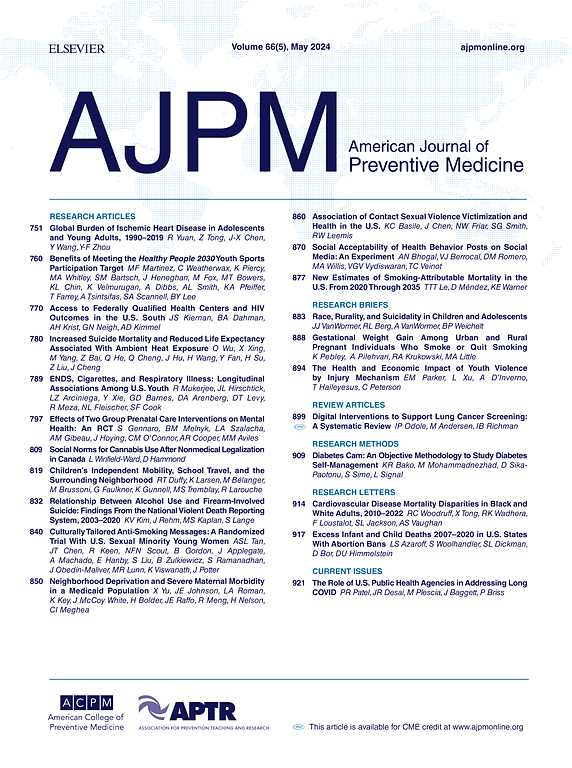Cabergoline Impairs Neural Network Efficiency: EEG-Based Evidence from Machine Learning Analysis and Preventive Implications for Cognitive Decline
IF 4.5
2区 医学
Q1 MEDICINE, GENERAL & INTERNAL
引用次数: 0
Abstract
Objective
This study investigates the effects of the D2 receptor agonist cabergoline on neural activity associated with Visual-Spatial Working Memory (VSWM), aiming to enhance understanding of pharmacological modulation of cognitive functions and explore its potential implications for preventive medicine, particularly in cognitive health preservation.
Subjects and Methods
This study uses the OpenNeuro public dataset, which includes data from 27 healthy adults who received either cabergoline or a placebo. Electroencephalography (EEG) data were analyzed to extract key neural network features, such as Power Spectral Density (PSD), Phase Locking Value (PLV), and small-world network properties. Machine learning techniques, including Recursive Feature Elimination (RFE) and random forest classifiers, were applied to assess the impact of cabergoline on neural efficiency and synchronization.
Results
The results indicate significant changes in neural signal synchronicity and brain network efficiency following cabergoline administration, with the PLV matrix showing the most notable effect. The drug appears to disrupt neural synchronization, potentially impairing VSWM capacity. The random forest model achieved 99% test accuracy, indicating robust classification of the drug's effects on cognitive performance.
Conclusions
This study provides new insights into the neural mechanisms of D2 receptor agonists like cabergoline, revealing potential implications for cognitive health. These findings contribute to the development of cognitive health management strategies, offering valuable guidance for early detection and intervention in cognitive decline, particularly in aging or neurodegenerative conditions, with broader applications in preventive medicine.
卡麦角林损害神经网络效率:来自机器学习分析和认知衰退预防意义的基于脑电图的证据
目的研究D2受体激动剂卡麦角林对视觉空间工作记忆(VSWM)相关神经活动的影响,旨在加深对认知功能药理调节的认识,并探讨其在预防医学,特别是认知健康保护方面的潜在意义。研究对象和方法本研究使用OpenNeuro公共数据集,其中包括来自27名接受卡麦角林或安慰剂治疗的健康成年人的数据。对脑电数据进行分析,提取关键神经网络特征,如功率谱密度(PSD)、锁相值(PLV)和小世界网络特性。机器学习技术,包括递归特征消除(RFE)和随机森林分类器,被应用于评估卡麦角林对神经效率和同步的影响。结果卡麦角林给药后大鼠神经信号同步性和脑网络效率发生显著变化,其中以PLV矩阵的影响最为显著。这种药物似乎破坏了神经同步,潜在地损害了VSWM的能力。随机森林模型达到了99%的测试准确率,表明药物对认知表现的影响分类稳健。结论本研究为卡麦角林等D2受体激动剂的神经机制提供了新的见解,揭示了其对认知健康的潜在影响。这些发现有助于认知健康管理策略的发展,为认知衰退的早期发现和干预提供了有价值的指导,特别是在衰老或神经退行性疾病中,在预防医学中有更广泛的应用。
本文章由计算机程序翻译,如有差异,请以英文原文为准。
求助全文
约1分钟内获得全文
求助全文
来源期刊

American Journal of Preventive Medicine
医学-公共卫生、环境卫生与职业卫生
CiteScore
8.60
自引率
1.80%
发文量
395
审稿时长
32 days
期刊介绍:
The American Journal of Preventive Medicine is the official journal of the American College of Preventive Medicine and the Association for Prevention Teaching and Research. It publishes articles in the areas of prevention research, teaching, practice and policy. Original research is published on interventions aimed at the prevention of chronic and acute disease and the promotion of individual and community health.
Of particular emphasis are papers that address the primary and secondary prevention of important clinical, behavioral and public health issues such as injury and violence, infectious disease, women''s health, smoking, sedentary behaviors and physical activity, nutrition, diabetes, obesity, and substance use disorders. Papers also address educational initiatives aimed at improving the ability of health professionals to provide effective clinical prevention and public health services. Papers on health services research pertinent to prevention and public health are also published. The journal also publishes official policy statements from the two co-sponsoring organizations, review articles, media reviews, and editorials. Finally, the journal periodically publishes supplements and special theme issues devoted to areas of current interest to the prevention community.
 求助内容:
求助内容: 应助结果提醒方式:
应助结果提醒方式:


